Short History of the MGA & Magnette
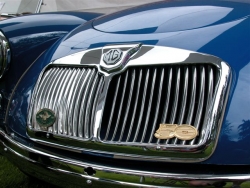
The MGA is a small, by North American standards, British sports car which was made in Abingdon from May 1955 to July 1962. The original car was a Roadster with a 1500cc engine. In September 1956, a Coupé version was produced with the same engine. In April 1958, the first MGA with a 1600 twin cam engine was produced, and in May 1959 the MGA got a 1600 push rod engine. A total of 101,081 MGA’s were made, with over 90% being exported from the UK. This included cars assembled from kits of parts in Australia, South Africa, Canada, Ireland, Holland, Mexico, and even Cuba. Of the total production, 9922 were the coupé model.
During the eight years of production, the body shape changed very little with different front grilles, rear lights, and badges being used. Many MGA’s on the road today have 1800cc engines from the MGB. Some have a 5-speed gearbox and a higher ratio differential to make the car “long legged” for modern roads.
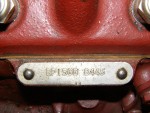 Engine Numbers (on tag riveted to the engine block):
Engine Numbers (on tag riveted to the engine block):
There were four different engine types used in the MGA:
- MGA 1500 (1489cc) Engine number prefixes BP15GB or 15GB-U-H, numbers 101-51767, and 15GD-U-H, numbers 101-7816 (high starter position)
- MGA 1600 (1588cc) Engine number prefixes 16GA-U-H or 16GA-U, numbers 101-31660
- MGA 1600 Mark II (1622cc) Engine number prefixes 16GC-U-H or 16GC-U-L, numbers 101-8851
- MGA Twin Cam (1588cc) 16G-U and 16GB-U, numbers 101-2272
Body Changes and Identification:
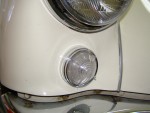
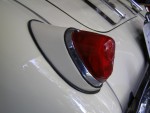
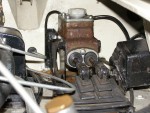
MGA 1500 Roadster and Coupe cars and early Twin Cam cars have small white front side lamps, and single red rear lamps (indicator, brake, and tail light).

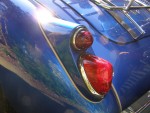

The MGA 1600 has larger diameter amber/white 2-bulb front side lamps, and two piece rear lamps – amber or red indicator, and red tail/brake light. This car has front disc brakes, and the brake master cylinder is taller.
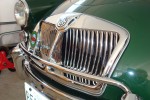 On the MGA 1600 Mark II, the rear lamp has a single combined red/amber (or all red) lens that is horizontally mounted. Also this car features a set-back radiator grille, and the dash is vinyl covered. All coupes have a vinyl covered dash.
On the MGA 1600 Mark II, the rear lamp has a single combined red/amber (or all red) lens that is horizontally mounted. Also this car features a set-back radiator grille, and the dash is vinyl covered. All coupes have a vinyl covered dash.
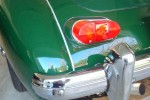 MGA 1600 Mark II Deluxe and Twin Cam cars have four-wheel disc brakes, and centre-lock steel wheels. Brake master cylinder and clutch cylinder are separate units. Many have removable louvered panels in the inner front fenders. (1600 MkII photos by John Rapson).
MGA 1600 Mark II Deluxe and Twin Cam cars have four-wheel disc brakes, and centre-lock steel wheels. Brake master cylinder and clutch cylinder are separate units. Many have removable louvered panels in the inner front fenders. (1600 MkII photos by John Rapson).
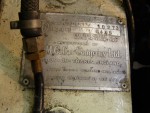 “1600”, “1600 Mk II” and “Twin Cam” badges are fitted, as appropriate, near the air vents on each side of the bonnet and on the lower edge of the boot lid below the MG badge.
“1600”, “1600 Mk II” and “Twin Cam” badges are fitted, as appropriate, near the air vents on each side of the bonnet and on the lower edge of the boot lid below the MG badge.
Cars can have steel wheels, spoked wheels or center-lock steel wheels.
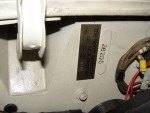 The car identity plate is fixed with screws to the top side of the heater shelf. This has the Car Number (or VIN/Chassis Number), and Engine Number stamped on it on 1500 cars. The later cars did not have the engine number on this plate, just “See Engine”.
The car identity plate is fixed with screws to the top side of the heater shelf. This has the Car Number (or VIN/Chassis Number), and Engine Number stamped on it on 1500 cars. The later cars did not have the engine number on this plate, just “See Engine”.
There is also a painted plate with a Body Number stamped on it, fitted to the firewall near the right side bonnet hinge. The Body Number was not recorded by the factory.
MG Magnette
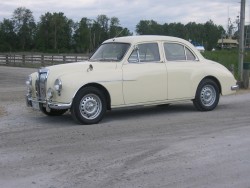
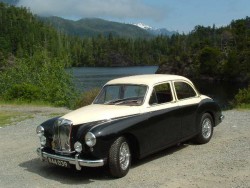
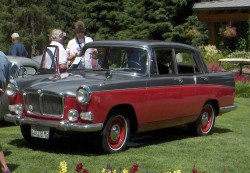 Production of the Z Magnette ended in December 1958 after 36,601 had been built. In 1959, a Farina styled Mk III Magnette appeared, and in 1961 a Mark IV with 1622cc engine, was produced. The last of these cars was made in 1969. These latter two models have nothing in common with the Z models.
Production of the Z Magnette ended in December 1958 after 36,601 had been built. In 1959, a Farina styled Mk III Magnette appeared, and in 1961 a Mark IV with 1622cc engine, was produced. The last of these cars was made in 1969. These latter two models have nothing in common with the Z models.


Comment by: Michael Herring
I am restoring a 1959 MG magnette MK3 farina and need some resorces for parts
Comment by: Sarah Wilson
Hi anybody,
Having already tried without success with Speed, I am wondering if there is anyone out there that recorded the sale of a deep red 1959 MGA 1600 Coupe at the 2012 Barrett-Jackson Scottsdale auction in January? I didn’t know it at the time, but that is the car that I ended up buying (at a reduced price). If you know of anyone who did record this, or knows how I could obtain this video clip, I would be very interested in obtaining a copy for memory’s sake, and also to see if there was any mention of VIN codes and matching numbers, since none of the data matches (1500 VIN plate, 1588 engine plate, 1622 engine, or car itself 1600).
Many thanks, Sarah.
Comment by: Jim Clark
I have a couple of gold engines that were as I understand it, Gold Seal BMC Replacement engines, can someone get me some information on the production run numbers to these engines? They have Starting Numbers of 48 instead of 15,16,18 etc.? Thanks
Comment by: Jim Clark
I think something is funny there I rebuild 1500, 1600, 1800 engines and I’ll bet that is a rebuild, I thought the 59’s had the 1600, It might be a replacement from before he purchased the car.
Comment by: John Terschak
I just bought a 1959 MGA 1500. the engine number is 15G?-u-H-2009. The last four numbers seem queer to me as being to low a number for that car. yet the owner I bought it from told me that it is the engine that it came with the car. Is this a correct engione for the 59 MGA 1500 Engine????
Comment by: Steven Chiarito
Question? Did the MGA coupes only come from the production line with grey rugs? Thank you for your answer. please reply to steven chiarito – eaglesteveo@sbcglobal.net.